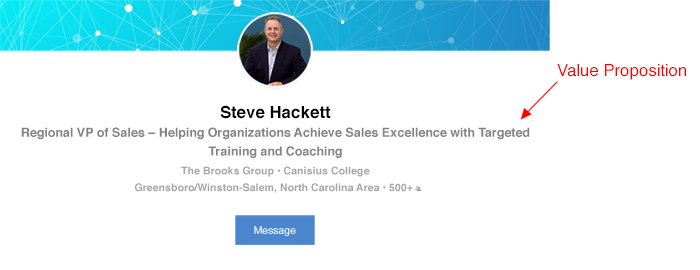Social media has become so much a part of our everyday lives, that it often crosses the line between business and personal. Of course, you don’t want your salespeople spending their time scrolling through Facebook videos of dancing gorillas or goats doing yoga, but LinkedIn is another story.
LinkedIn is a powerful tool for salespeople, and the social platform is a natural fit for anyone hoping to generate sales leads. But in order to get the most out of LinkedIn, your salespeople need to be using it in the smartest way.
Here are 9 LinkedIn lead generation tips to help get your salespeople started:
1. Develop a Digital 30-Second Pitch
If you were heading to a job fair or a networking event, you would be ready with a 30-second explanation of what service you provide. At its core, LinkedIn is the never-ending, online equivalent of a networking event. Your salespeople should always be ready with an answer to the question “What exactly do you do?” Their 30-Second pitch is the answer to that question.
This 30-Second pitch—or value proposition—should appear on your sales reps’ LinkedIn profile either in text or video form. It’s also a great idea for your salespeople to include an ultra-condensed version of their value proposition in the job title section of their profile.
Here’s an example:

2. Add Connections to Your Network
Making connections is just as important on Linkedin as it is in real life for salespeople. The more connections your reps have, the better positioned they are to connect with qualified prospects down the line. Coach your salespeople to make it a habit of connecting on LinkedIn whenever they interact with people in day-to-day business.
4. Expand Your List of Leads
LinkedIn’s 2nd and 3rd level connections allow your salespeople to exponentially grow their outreach. Have them start by looking at people who fit your buyer persona and are connected to their current contacts. A good practice is to make a note of people they would like to connect with, and then ask their current connections for introductions. Not only does this give your salespeople a chance to grow their network, it also gives them the opportunity to stay connected with their existing network.
5. Keep up with Your Leads
Good salespeople know what is going on with their clients, and LinkedIn is a great way to do that. Advise your sales reps to monitor their current leads or opportunities on LinkedIn to keep up to date on any business changes or other relevant information.
If a current opportunity shares an article or posts something to LinkedIn, your salesperson should comment, send an InMail message, or at least make a note to reference the subject in any future interactions.
6. Be Active Every Day
If your reps want LinkedIn prospecting efforts to be effective, they need to be consistently engaged with it. They can make it part of their routine by blocking out a short amount of time each day for checking in and posting.
Writing their own articles or sharing articles from reputable sources is a great way for your reps to position themselves as subject matter experts in the eyes of prospects. Remember, a prospect is likely to do their own homework before agreeing to partner with your salesperson and organization, so having that online visibility is key.
7. Join Relevant Groups
LinkedIn groups offer a way for your salespeople to connect with a targeted group of people that fit your ideal buyer persona. Once they’ve joined, your salespeople can use these groups to share information and further position themselves as experts in the industry.
They can also monitor what’s being shared or discussed in the group to keep a pulse on the pain points, challenges, and desires of their target persona.
8. Celebrate Others’ Achievements
LinkedIn is a great platform for your salespeople to share client success stories. Not only does this strengthen the relationship between your salesperson and the client they are bragging on, but it also helps to position your organization. It sends a message to prospects that your salesperson and your organization as a whole are invested in the success of your clients.
9. Give Positive Recommendations
Your salespeople can strengthen their profiles and LinkedIn presence by having others endorse and recommend them. Before they begin asking others to recommend them, they should spend a few minutes each day or week writing and posting recommendations for their customers and contacts. This gives them an incentive to recommend your salesperson in return.
LinkedIn can be a goldmine when it comes to prospecting, but unfortunately many sales professionals are missing out on all it has to offer. Help your salespeople be intentional with their LinkedIn prospecting strategy, and work with them to develop a plan they can implement and stick to.
NOTE: Our sales training tools are designed to make your life easier. Use them to your advantage.
How to Get Salespeople to Use CRM Tools
Our most recent research study revealed that 60% of salespeople report that the sales process in their CRM software doesn’t match what happens in their day-to-day sales reality. Furthermore, only 54% of sales managers tell us they believe that their organization’s CRM software aids their team’s selling efforts.





